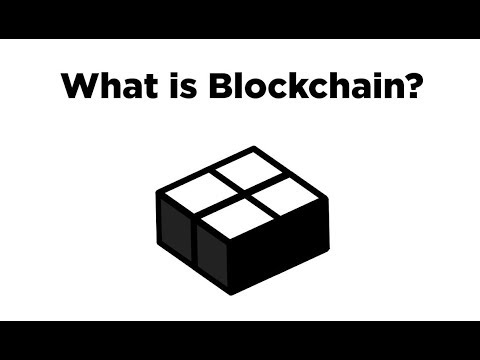
You dont understand Bitcoin, Blockchain, Ledger, Miner (Notes)? Learn what is Blockchain? | Blockchain Technology | What is Blockchain in Simple Terms?
Block chain is the link between business and technology.
Bitcoin and Blockchain
Bitcoin is digital currency, a currency which is digital.
Block chain, on the other hand, is the technology that enables moving bitcoin from one person to another.
Blockchain helps solve the problem of money transfer.
For example, James who lives in Germany wants to send money to Adam who lives in Switzerland. The conventional way is that a trusted third party, normally a bank, gets involved between these two persons to facilitate this transfer of money.
James contacts his bank to send money to Adam. The bank identifies Adam as the intended receiver of the money through his bank account. And the money from James bank account is transferred to Adam’s in Switzerland. And for providing this service the bank charges a fee.
This process normally takes 2 to 5 days, depending on several factors.
Blockchain, on the other hand does three things. One, it removes the third-party from money transfer. Two, the transfer takes almost no time at all. And three it is cheaper.
Let’s take a look at the function of blockchain in a little detail.
Free Webinar: https://app.webinarjam.net/register/32928/a8cde8799f
Blockchain: Under the Hood
The concept of open ledger is crucial in understanding blockchain.
Suppose there is a network of four people who want to move money from one another.
At inception, A has 10 euros. This amount along with its owner is registered in the ledger. Now A wants to send five euros to B. this transaction will be added to the current ledger as a chain.
Now person B wants to send three euros to person C. The previous process will be repeated to add this transaction to the ledger. And finally, C wants to send one euro to D. And this gets recorded the same way.
This is the concept of open ledger, and the way the transactions are linked one after another is why it is called blockchain. This chain of money transaction is open and public to everyone.
The beauty of open ledger is that everyone in the network has the same information about the flow of money and how much every individual has. Also, everyone is a party to decide whether a transaction is valid or not.
For instance, if A tries to send 20 euors to D, it will not be added to the ledger because it is not a valid transaction. Everyone in the network knows that now A has only five euros therefore, this transaction will not become a part of the chain.
The second principle of blockchain is decentralization. Right now this open ledger seems centralized. To change this, blockchain provides a distributed ledger. It takes the centralized open ledger and distributes it.
So anyone in the network can have the copy of the ledger, and this eliminates the need for a centralized trusted entity. But this also creates a problem; if anyone can have the copy of the ledger then to maintain the accuracy all the copies need to be exactly the same. Any change occurring in the open ledger needs to be recorded at the same time in all copies that the network participants possess.
The ledger is distributed across various nodes (a node is just a unit in a network). For simplicity you can think of a node as one person, in a network or many people.
Let’s see how this distributed ledger gets synchronized.
Suppose B wants to send 5euros to D. To do that B will publicly broadcast his intention to the entire network. And everyone in the network will immediately see that B wants to send 5euors to D. But this transaction is not valid yet.
Before we go any further we must understand the concept of ‘miners’. Miners are special nodes (or people) that can hold the ledger. Let’s assume that C and A are miners.
Now this gets interesting because the way a transaction is validated is based on a competition. When A and C observe an invalid transaction, they will both compete to validate it and add it to the ledger first.
The miner who wins this race, gets a financial reward.
Let’s understand what it takes to win this race.
A miner needs to do two things. First, he needs to validate the transaction. This is easy, because the ledger is open and anyone can calculate whether a person has enough funds to make that transaction.
The second part is difficult, where the miner needs to find a key that enables him to actually add the new transaction to the ledger chain.
How does a miner find the key?
Well, he needs to invest computational power and time to find the key because it’s found through a random search.
Helpful links
https://en.wikipedia.org/wiki/Blockchain
https://en.wikipedia.org/wiki/Financial_technology
https://en.wikipedia.org/wiki/Cryptography
Free Webinar https://en.samt.ag/CryptoCurrency-course-bitcoin-Ethereum
source
